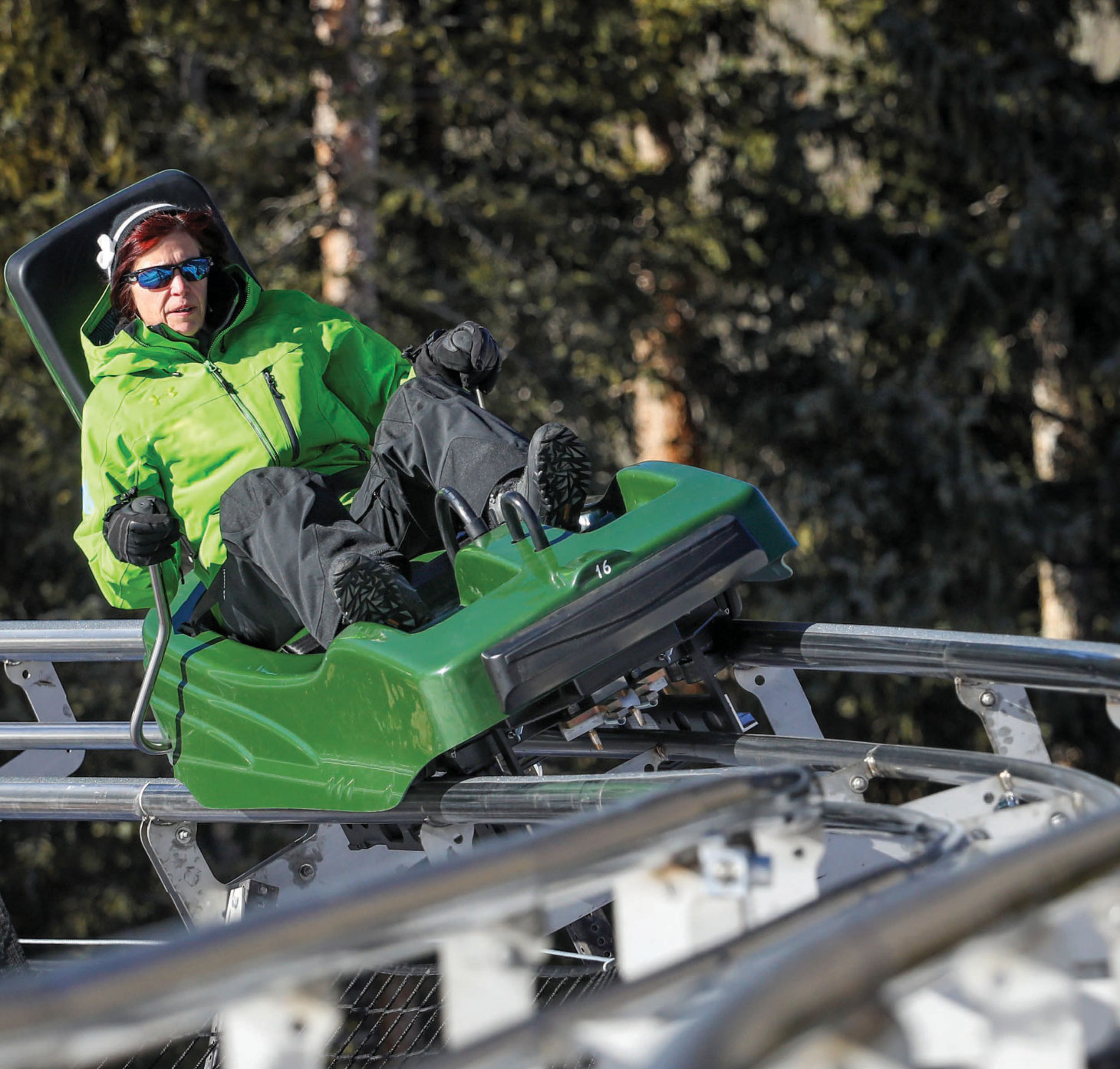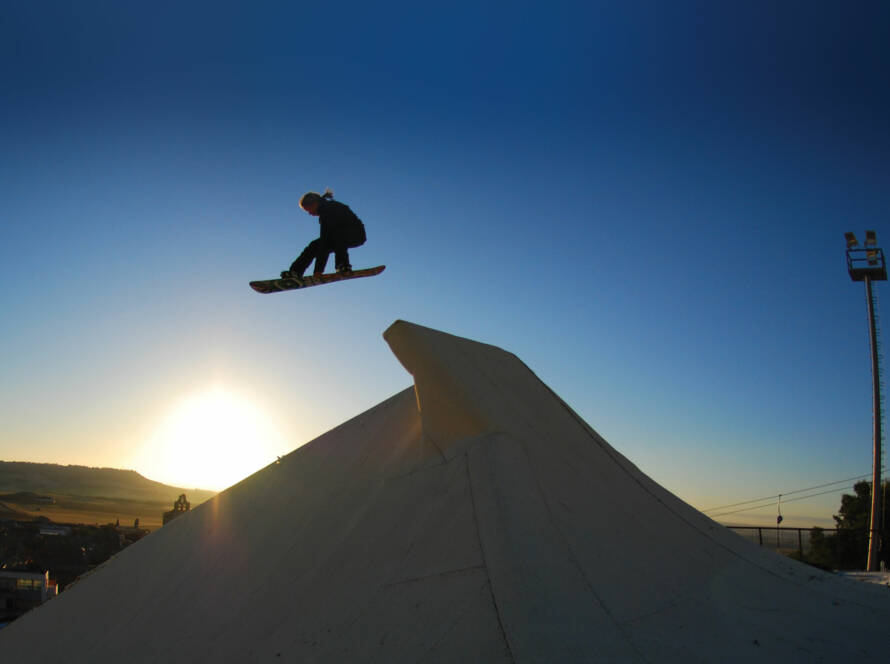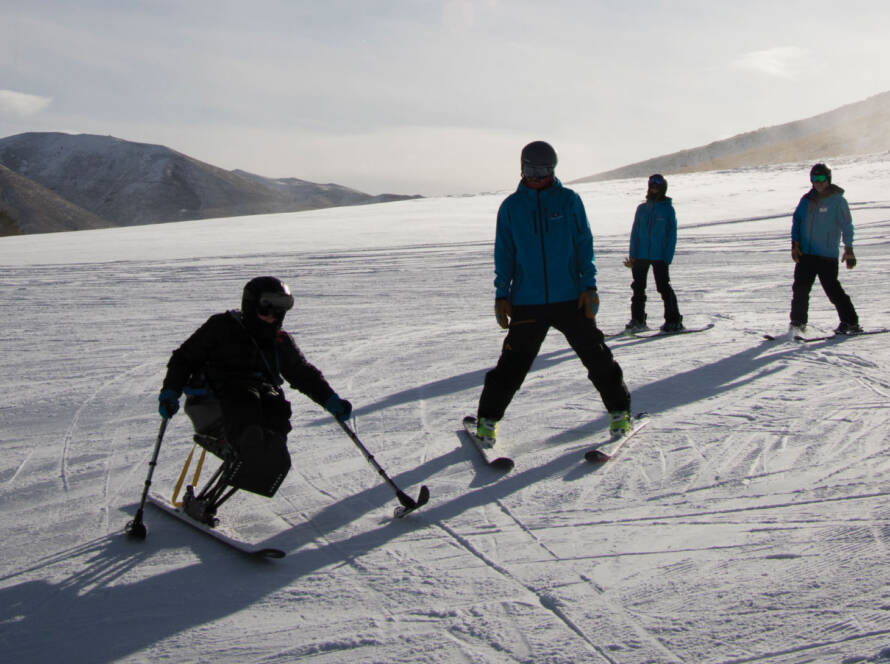These days, an increasing number of ski resorts are adding attractions to beef up their appeal as popular year-round recreation destinations. When it comes to summer customers, offerings like mountain bike parks, zip lines and aerial adventure courses are a popular draw, but the hottest ticket right now may be the alpine coaster.
“You see mountain coasters popping up all over Colorado,” said Taylor Prather, public relations manager at Copper Mountain Resort. The Rocky Mountains resort located 75 miles west of Denver unveiled a brand-new coaster attraction this past December.
“I believe there are four new ones that debuted this season alone at Colorado ski resorts, so we’re tapping into those thrill seekers who are coming and want to try something different,” Prather said.
While the resort’s Rocky Mountain Coaster has only been running a few months, Copper Mountain is already seeing significant benefits. “We were surprised to see a lot of guests coming up solely to ride the coaster,” Prather said, adding that it’s also proved popular with guests looking for an ancillary activity to do after a day of skiing or who just want to try something different while at the resort.
Copper Mountain’s Rocky Mountain Coaster was installed by Aquatic Development Group (ADG), the leading water park design and construction company that expanded into the alpine coaster and slide business back in 2012. ADG’s owner, Ken Ellis, is also the co-owner of Camelback Mountain Resort, a popular all-season ski resort in Pennsylvania that boasts both a mountain coaster and an alpine slide as key attractions.
To date, ADG has installed seven mountain coasters and 25 alpine slides at resorts in the United States. An eighth coaster is on tap to open at Purgatory Mountain in Colorado in late spring/early summer this year.
“We’d like to see even more of these in the Northeast and around North America because when the tide rises all the boats float,” said Bill Farrell, marketing director for Berkshire East Resort in Massachusetts, which has been profiting from an ADG-installed mountain coaster since 2014.
“It’s been phenomenal. It really is a source of pride for us, especially on Mondays when we hear the revenue figures for the weekend,” Farrell said. “It’s probably been one of the most successful investment decisions that we’ve made.”
Farrell says Berkshire East is able to leverage its mountain coaster in several important ways. The coaster is often included in packages with offerings such as white water rafting and other adventure activities at the resort, increasing profitability, and groups like the boy scouts and wedding parties love it.
All this has enabled Berkshire East to broaden its customer base considerably. “As soon as the coaster opened, we discovered there was a whole new group of demographics that were visiting the mountain, and this was people who weren’t skiing.”
$2 million price tag
Jessica Mahoney, ADG’s director of marketing, says their coaster systems typically cost about $2 million to design and build, adding that resorts can expect to recoup their investment in as little as two years. Because ADG mountain coasters are designed to operate year-round, she says this enhances their appeal as an investment.
According to Mahoney, resorts typically run alpine coasters on a limited basis during the winter (such as weekends and holidays) and will ramp up coaster operations to six or seven days a week for the key revenue period during summer. For this reason, Mahoney said, “when you decide to build a coaster, ensuring an install time to get you up and running for those summer months is essential.”
As flagship attractions that help drive new and different customers to four-season resorts, mountain coasters are not only sought out by thrill-seekers looking for their next adrenaline rush, they’re very popular with families. Kids as young as three can ride them, and as many resorts have discovered, mountain coasters are also a hit with the silver-haired set.
Bob Serfass, director of mountain adventures at Camelback, says this isn’t something the resort really anticipated when it decided to add a mountain coaster.
“We’re getting a lot of older people who really like the fact that they can control the speed,” Serfass said, adding that many of them are grandparents who see it as great opportunity to have fun riding the coaster with their grandchildren. “It really tailors itself to people of every age,” he said.
Seating up to two, ADG’s coaster carts are rider controlled (hand-held brakes enable carts to go as fast as 25 mph or as slow as riders want) and feature a patent-pending collision avoidance system and numerous other safety features.
Mahoney notes that ADG’s customers generally charge anywhere from $10 to $25 for their coaster experiences that feature a wide variety of zigs, zags, dips and 360-degree corkscrew turns, usually through picturesque forest areas. She adds a typical ADG mountain coaster ride lasts around five to six minutes.
Mahoney adds that the average of length of an ADG alpine coaster track is about 5,000 feet. The new one at Copper Mountain is among the longest in North America, with a track that’s 5,800 feet long (of which nearly 4,000 feet is the downhill descent) and with a vertical drop of 430 feet.
Each ADG coaster track is prefabricated at the company’s manufacturing facility in New York state. The modular design and flexible track configurations of ADG coaster systems enables them to be tailor-made for each mountain’s terrain and also cuts down on installation time.
According to Mahoney, an ADG coaster track can be built from start to finish in under four months. ADG assists clients not only with the planning process, both in terms of assessing potential routes and the operational needs of coasters, but also provides project managers who work on-site to ensure construction goes smoothly.
“It’s a partnership,” Mahoney said.




